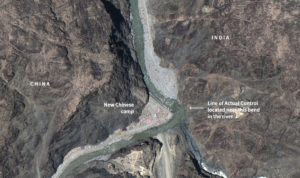Kuora: Genetics and diet: why northern Chinese people are taller than southern Chinese

Northern Chinese are taller than their southern counterparts, but why? That’s the question Kaiser originally answered on Quora on November 6, 2014.
First, let’s establish that what the question assumes is really true: Yes, in fact, Northern Chinese are indeed generally taller. A 2010 study looked at mainland Chinese population groups and found, for men, the following (which I’m taking from the Wikipedia page on human height, where you can find the citations for the study).
National
MALE FEMALE
172.1 cm 160.1 cm (19-year-old subjects)
Beijing (North China)
174.7 cm 161.3 cm (21-year-old subjects)
Sichuan (South China)
169.2 cm 158.2 cm (20–24-year-old subjects)
Human height is largely a function of the height of parents, but this difference has been observed for many centuries, so clearly something is at work. Northerners have generally been taller at least since Song times, which is something remarked on in books I’ve read on that era, and in the observations of travelers who visited China during that time; and from conversations I’ve had on the subject with historians. My working hypothesis is that it’s a combination of genetics and diet. The ancestry of Northern Chinese is a mixture of the more-or-less indigenous “Han” peoples of the North China Plain with Turkic, Turko-Mongolian, Tungusic and others who comprised the various nomadic invaders who took and mostly ruled North China during the Era of Division following the collapse of the Eastern Han Dynasty in the 3rd through 7th centuries; again in the 10th through 13th; and once again from the mid-17th through the early 20th. The ancestry of the south is a mixture of the (again, only more or less) indigenous Malayo-Polynesian peoples who were only notionally “pushed out” of what’s now China but clearly interbred with people who migrated southward over centuries, culminating in concerted pushes during the Han through Tang periods, and who probably bore much closer physical resemblance to peoples of Indochina and Indonesia.
As for diet, the fact that the wheat-vs-rice agricultural line so closely matches the height distribution line makes me believe that this must have a role. Milled wheat, the staple in North China above the line of the Huai River and the Qin Mountains, has higher protein content than milled rice, which is the staple of the South. More dairy was also consumed in the north, due in large part to the cultural legacy of the pastoral nomads who ruled large swaths of North China for much of its history. While I’m not aware of historical nutrition studies for China, it’s well established that adult height has a lot to do with nutrition — as is easy to see anywhere, north or south, in China today, where on any high school campus you can see plenty of 17-year-olds who are 184 centimeters (6 feet) or taller still!
Kuora is a weekly column.






